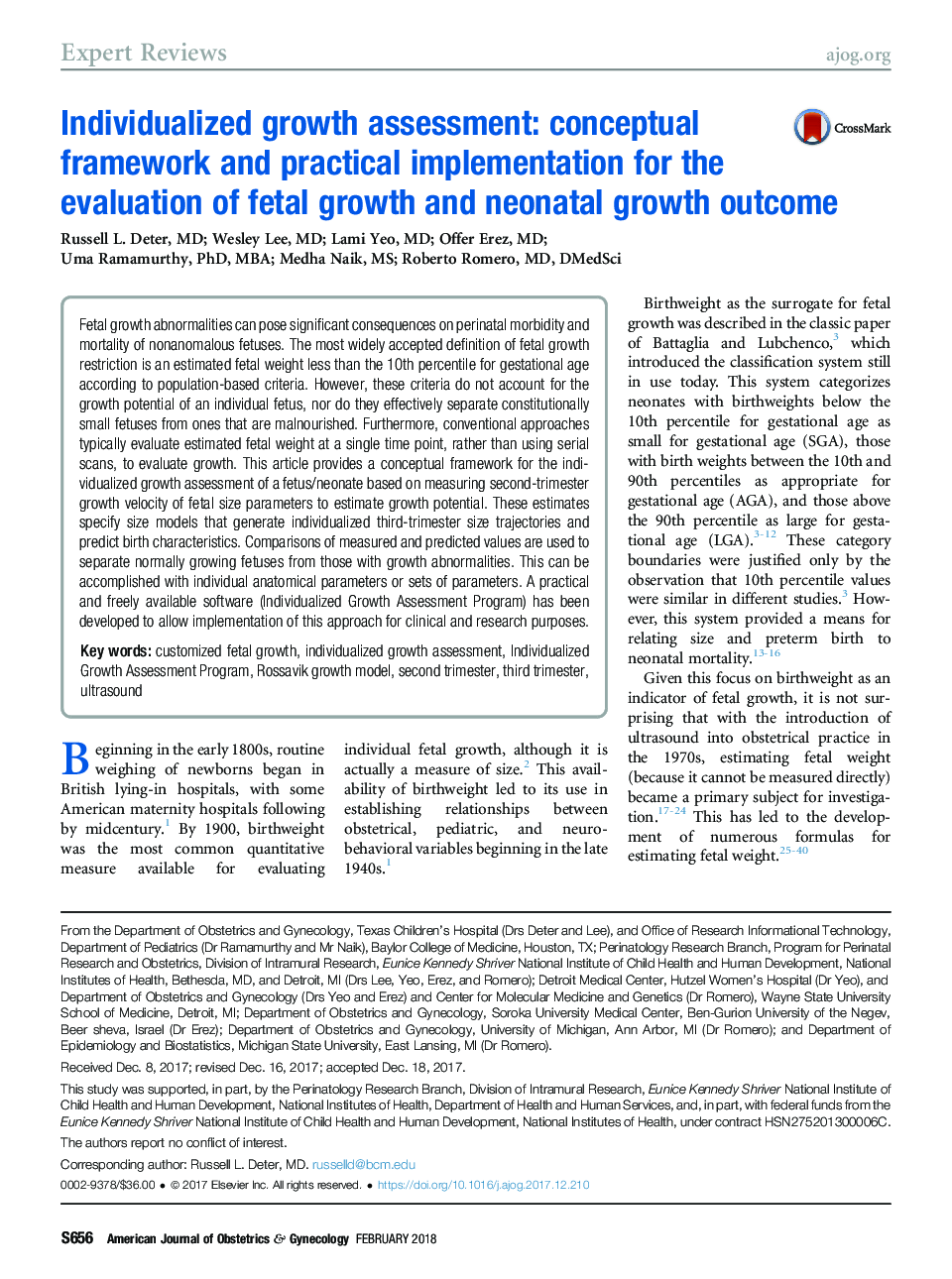| Article ID | Journal | Published Year | Pages | File Type |
|---|---|---|---|---|
| 8752801 | American Journal of Obstetrics and Gynecology | 2018 | 23 Pages |
Abstract
Fetal growth abnormalities can pose significant consequences on perinatal morbidity and mortality of nonanomalous fetuses. The most widely accepted definition of fetal growth restriction is an estimated fetal weight less than the 10th percentile for gestational age according to population-based criteria. However, these criteria do not account for the growth potential of an individual fetus, nor do they effectively separate constitutionally small fetuses from ones that are malnourished. Furthermore, conventional approaches typically evaluate estimated fetal weight at a single time point, rather than using serial scans, to evaluate growth. This article provides a conceptual framework for the individualized growth assessment of a fetus/neonate based on measuring second-trimester growth velocity of fetal size parameters to estimate growth potential. These estimates specify size models that generate individualized third-trimester size trajectories and predict birth characteristics. Comparisons of measured and predicted values are used to separate normally growing fetuses from those with growth abnormalities. This can be accomplished with individual anatomical parameters or sets of parameters. A practical and freely available software (Individualized Growth Assessment Program) has been developed to allow implementation of this approach for clinical and research purposes.
Related Topics
Health Sciences
Medicine and Dentistry
Medicine and Dentistry (General)
Authors
Russell L. MD, Wesley MD, Lami MD, Offer MD, Uma PhD, MBA, Medha MS, Roberto MD, DMedSci,
